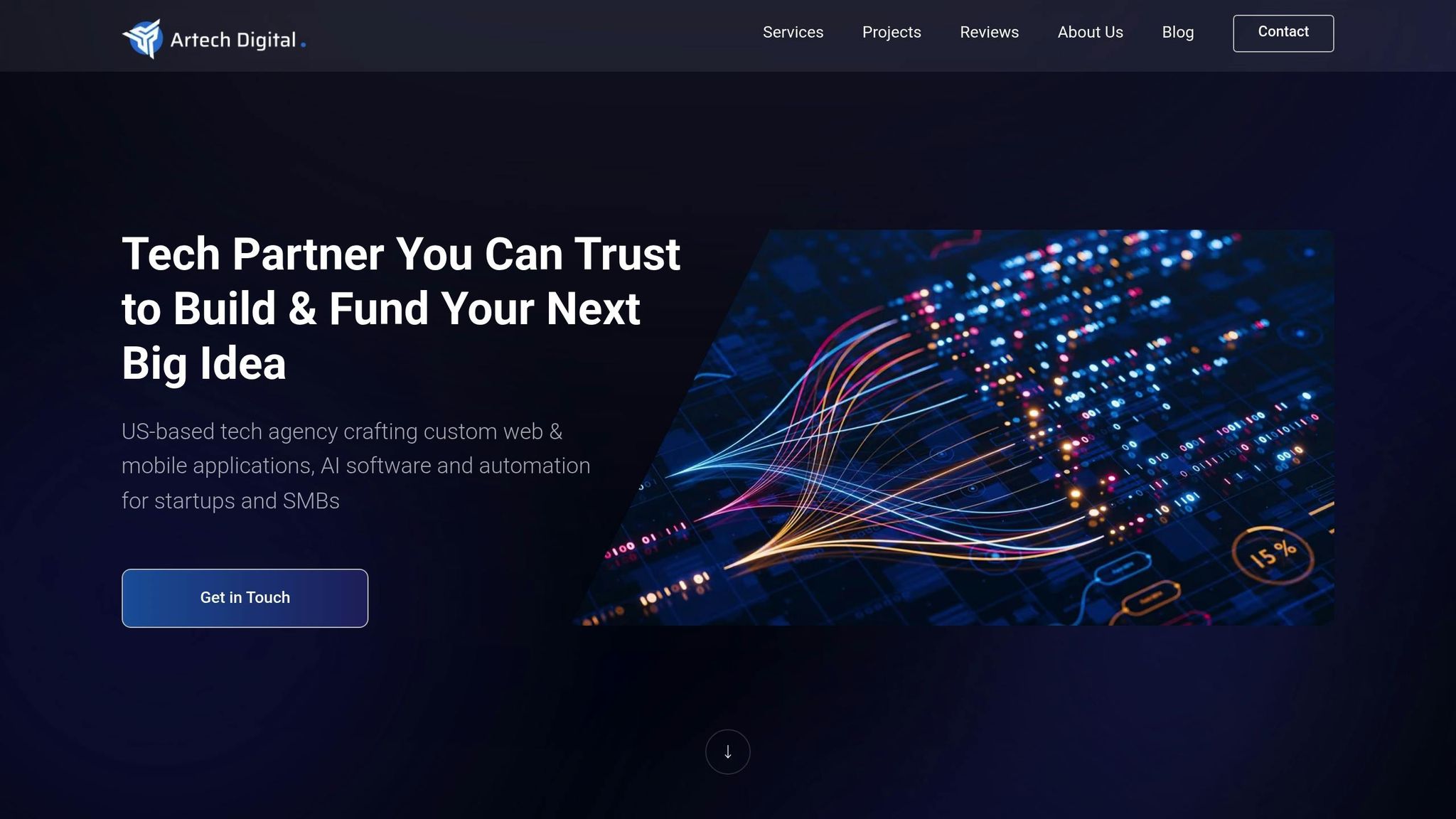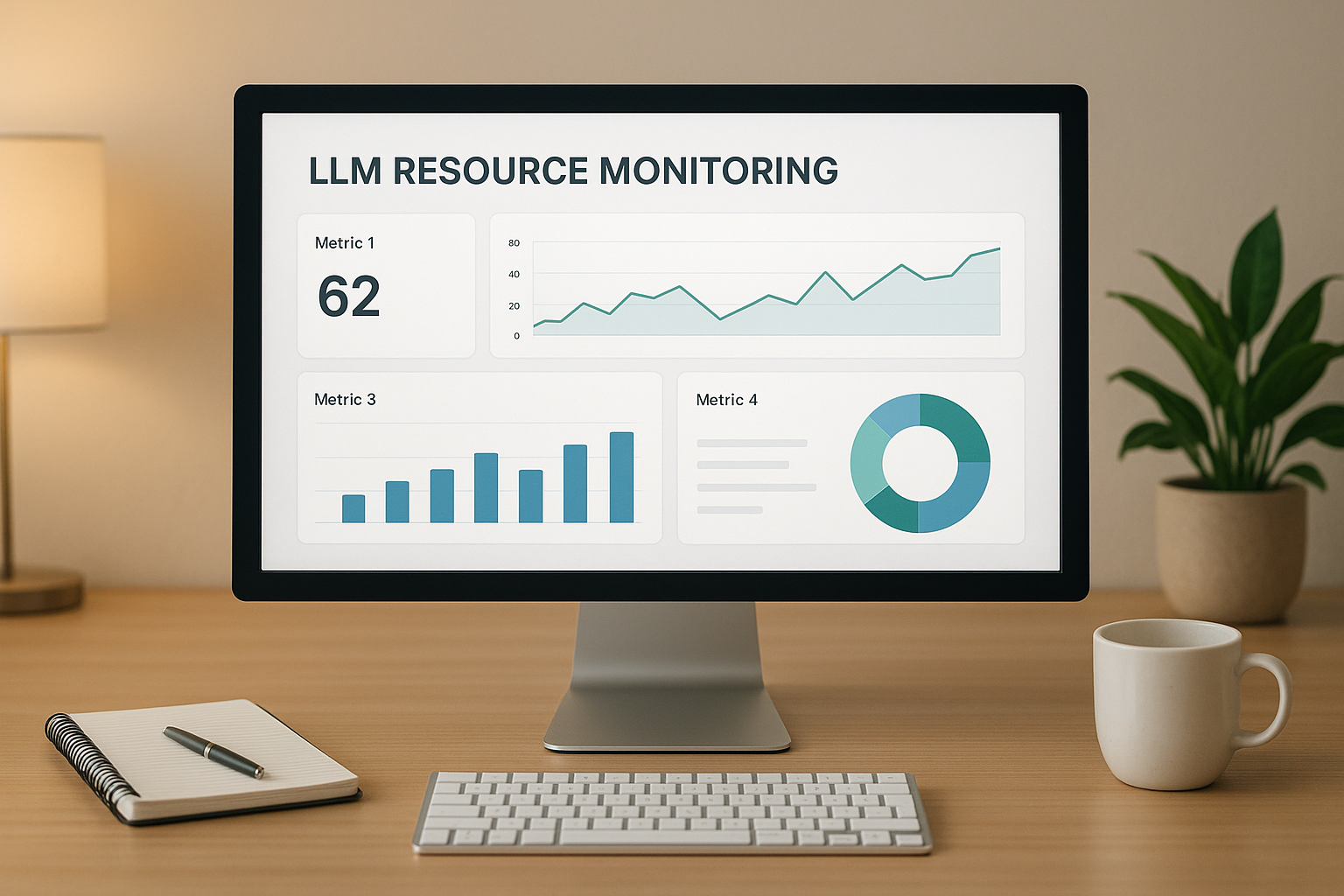
RAG chatbots are powerful tools that combine language models with real-time data retrieval. But their complex architecture introduces privacy risks that need careful management to prevent sensitive data exposure. Key concerns include how user queries, internal documents, and retrieved data are handled. Protecting privacy in these systems requires:
Testing and monitoring are crucial. Regular adversarial testing, red team exercises, and compliance audits can identify vulnerabilities. Real-time monitoring and well-defined incident response plans ensure quick action when issues arise. Aligning with privacy laws like HIPAA and CCPA is also critical for compliance, requiring robust data retention policies and third-party vendor management.
RAG chatbots come with their own set of privacy challenges, largely due to how they handle and process data. Unlike traditional chatbots that rely solely on pre-trained models, RAG systems involve multiple steps where sensitive information could be exposed. For organizations using these advanced systems, understanding these risks is essential.
The way data flows through RAG systems creates several potential weak spots:
These vulnerabilities highlight the need for strong safeguards, which we'll explore later.
RAG systems face unique threats that go beyond standard chatbot risks:
These threats underline the importance of implementing robust security measures to protect the system and its data.
Several established frameworks provide guidance for addressing these risks:
Ensuring privacy in Retrieval-Augmented Generation (RAG) chatbots requires a step-by-step approach that considers every stage of the data lifecycle. The goal is to layer multiple security measures rather than depending on just one. From the moment data enters the system to when it's delivered to the user, privacy must remain a top priority.
Start with the basics: only collect the data you truly need. A common mistake is feeding entire document repositories into RAG systems without first filtering out sensitive or irrelevant content. This increases risk unnecessarily.
Data minimization is all about being selective. Before adding documents to your knowledge base, define clear criteria for what’s essential. For instance, a customer service chatbot might require product manuals and FAQ documents but has no need for internal employee reviews or financial forecasts.
Encryption is another critical layer. Use TLS 1.2+ for data in transit and AES-256 for data at rest. If traditional encryption methods interfere with similarity searches, consider homomorphic encryption, even though it may come with performance trade-offs. Additionally, mask sensitive identifiers like Social Security numbers or credit card details during the ingestion process. This ensures embeddings retain their context while safeguarding private information.
Finally, implement strict identity verification and permission controls to tighten security further.
Managing who can access what information is vital for RAG systems, especially when they serve multiple departments or user groups. Without proper access controls, sensitive documents could be exposed to unauthorized users.
Role-Based Access Control (RBAC) assigns permissions based on predefined roles. For example, a customer service agent might access troubleshooting guides, while a sales manager could view pricing documents and competitor analyses. These roles should map directly to specific document collections in your vector database.
For more nuanced control, Attribute-Based Access Control (ABAC) considers additional factors like department, security clearance, project involvement, and even time of access. For instance, financial documents might only be available to finance team members during business hours.
Access controls should integrate seamlessly with the retrieval process. When a user submits a query, the system first checks their permissions, then limits the search to authorized documents. This ensures sensitive information doesn’t appear in results, even if it’s relevant to the query.
Permissions should also adapt dynamically. If an employee switches roles or a project concludes, their access rights should automatically update to reflect the change. This prevents former team members from retaining access to information they no longer need.
Beyond access controls, redaction and masking add another layer of privacy.
To protect sensitive information, organizations can either redact it before it enters the system or mask it in the chatbot's responses. Each method has its own strengths and challenges.
| Approach | Advantages | Disadvantages | Best Use Cases |
|---|---|---|---|
| Input Redaction | Eliminates sensitive data entirely | Reduces document usefulness; irreversible | High-security environments; compliance-heavy industries |
| Output Masking | Retains full document context for retrieval | Risk of masking failures; complex setup | Internal systems; role-based access scenarios |
Input redaction removes sensitive details before documents are processed into vector embeddings. This method offers the highest level of security since the data never enters the searchable knowledge base. However, it can limit the quality of chatbot responses when redacted information is crucial for context.
Output masking, on the other hand, keeps the original documents intact but filters sensitive information from responses based on user permissions. This method preserves context while protecting unauthorized users from seeing restricted content. The challenge lies in ensuring the masking system functions flawlessly, as any failure could lead to data exposure.
A hybrid approach combines these methods, applying redaction to highly sensitive details like personal identifiers while using output masking for information that might be relevant to certain users. While this strikes a balance between security and functionality, it requires more effort to implement and monitor.
Even with strong input controls, chatbots can inadvertently reconstruct sensitive information. That’s why filtering and monitoring outputs is critical.
Content filtering layers scan responses in real time, searching for patterns that could indicate sensitive data. For example, they might flag sequences resembling Social Security numbers or email formats. This ensures users experience minimal delays while maintaining privacy.
Safety classifiers go a step further by using machine learning to detect potentially harmful content. These models are trained to identify attempts to extract personal data, proprietary information, or confidential business details. They’re especially effective against sophisticated prompt injection attacks designed to manipulate the system.
Response mediation systems add another layer of oversight. If sensitive content is detected, the system can block the response, provide a sanitized version, or escalate the query to a human reviewer. This approach is particularly useful in high-stakes scenarios where avoiding data breaches is paramount.
Audit trails are essential for tracking interactions. These logs record blocked attempts and flagged responses, helping identify patterns in user behavior and potential weaknesses in your privacy controls. Regularly reviewing these logs allows for continuous improvement of your system’s security measures.
Staying ahead of evolving probing techniques requires regular testing and updates to your safety protocols.
Once you've put privacy measures in place, the work doesn't stop there. Regular testing and monitoring are essential to ensure those systems hold up under pressure and continue to protect sensitive information.
Testing privacy systems effectively often begins with adversarial testing - essentially, trying to break the system. This involves simulating attacks designed to expose vulnerabilities, crafting queries that could extract sensitive data, and testing edge cases that don't usually come up in everyday use. Think of it as stress-testing your system against scenarios that attackers might exploit.
Quarterly red team exercises are a must. These exercises can include techniques like prompt injection, social engineering attempts, and technical exploits. Pair these with automated scanning tools that continuously check for patterns like Social Security numbers, credit card details, or email addresses in chatbot outputs. These tools also ensure that redaction and masking systems are doing their job across various queries and user roles.
Penetration testing for Retrieval-Augmented Generation (RAG) systems focuses on the retrieval mechanisms. Testers assess whether the vector database can be manipulated to return unauthorized documents, whether similarity searches can be exploited to access restricted content, or if the embedding process inadvertently reveals sensitive information.
Compliance audits are another critical piece of the puzzle. These audits verify that your system meets regulatory requirements by checking things like data retention policies and user consent mechanisms. The documentation from these audits is invaluable when facing regulatory reviews.
Load testing is also vital. Privacy controls that work seamlessly for 100 users might crumble under the strain of 10,000 concurrent requests. By simulating high-traffic scenarios, you can identify where performance might falter and address those issues before they become real problems.
After testing, ongoing monitoring ensures your privacy measures stay effective under real-world conditions.
Real-time monitoring acts as an early warning system for privacy issues. Anomaly detection algorithms can flag unusual activity, such as a single user making hundreds of queries containing personal identifiers. These flags can help detect potential breaches before they escalate.
Behavioral analytics take this a step further by identifying baseline patterns for different user roles. For example, a customer service representative accessing product documentation might follow predictable patterns. But if someone starts systematically querying for employee data, that's a red flag worth investigating.
To avoid unnecessary disruptions, calibrate alert thresholds carefully. Use a tiered alerting system: minor anomalies generate low-priority notifications, moderate issues alert security teams, and severe violations can automatically restrict user access while notifying senior management.
Incident response playbooks are essential for handling privacy breaches. These should outline steps for containment, evidence preservation, notifications, and recovery. Regular tabletop exercises help ensure teams are ready to act quickly and effectively when real incidents occur.
Forensic logging is another key component. Logs should capture detailed interaction data, such as query timestamps, user identifiers, accessed documents, applied privacy controls, and any detected anomalies. However, it's crucial to exclude sensitive content from these logs. Retention periods should comply with legal requirements while balancing storage costs.
Clear escalation procedures are also important. These define when and how to involve legal teams, regulatory bodies, and affected users. Having clear criteria ensures swift decision-making during high-pressure situations, helping to meet notification requirements without unnecessary panic.
The insights gained from monitoring and incident response feed directly into compliance metrics and help refine privacy systems over time.
To gauge how well your privacy systems are working, you'll need to track specific metrics. These numbers provide a clear picture of system performance and highlight areas for improvement.
Report these metrics monthly to monitor trends and justify future investments. Monthly dashboards can highlight key indicators, while quarterly reports can dive deeper into analysis and recommendations for improvement.
The aim isn't perfection across all metrics but steady progress and the ability to respond quickly when issues arise. Privacy management is an ongoing process that demands constant attention and adaptation based on real-world performance.
When it comes to navigating US privacy laws, organizations deploying RAG (retrieval-augmented generation) chatbots face a complex landscape. These systems, which handle and retrieve personal data, must align with both federal and state regulations. The challenge grows when sensitive information is processed across multiple jurisdictions. Below, we’ll explore key legal requirements and strategies to ensure RAG systems meet compliance standards in the US.
For healthcare organizations, HIPAA compliance is crucial. This means implementing strict access controls to segregate PHI (Protected Health Information), ensuring only the minimum necessary data is retrieved for a specific purpose. Assigning a security officer to oversee training and safeguards is another essential step. Vector databases used in RAG systems must adhere to these "minimum necessary" standards to limit the exposure of sensitive information.
Under CCPA, organizations must maintain comprehensive records of data categories, retention schedules, and third-party access related to RAG outputs. This involves creating a robust Records of Processing Activities (RoPA) document that tracks the flow of data - from ingestion to retrieval and response generation. It should also outline the legal basis for processing, retention periods for knowledge bases and conversation logs, and the technical measures in place to protect personal information.
Sector-specific regulations add further layers of responsibility. Financial institutions using RAG chatbots must meet GLBA standards to safeguard customer financial data. Similarly, educational institutions are governed by FERPA, which restricts access to student records and requires explicit consent for certain disclosures.
To address potential compliance gaps, privacy impact assessments are essential for RAG deployments. These evaluations should focus on risks unique to RAG systems, such as cross-contamination of user data or accidental exposure of sensitive information during similarity searches.
US privacy laws also emphasize user rights, requiring tailored approaches to data management in RAG systems. For example, when users request access to their personal data, the system must be capable of retrieving information from both structured databases and unstructured document collections within the knowledge base.
Complying with deletion requests involves more than removing data - it requires regenerating embeddings and clearing caches to ensure complete removal. Additionally, RAG systems must provide user data in structured, machine-readable formats for portability. This includes not only the raw data but also metadata about its processing, categorization, and any automated decisions made using the information.
Retention schedules must be automated to enforce proper data deletion timelines. For cases involving legal holds, systems need workflows that prevent automatic deletion while ensuring other data is removed as required. These workflows should also account for exceptions, such as extending retention for regulatory investigations.
Consent management is another critical area. RAG systems must track granular user preferences, ensuring data retrieval aligns with specific consents. For instance, a user might agree to their data being used for customer service purposes but not for marketing. The system must respect these distinctions to remain compliant.
Managing third-party vendors is a key component of compliance for RAG systems. Data Processing Agreements (DPAs) should address unique risks, such as ensuring data segregation in shared environments and certifying complete data destruction upon contract termination. Many standard cloud service agreements fall short of covering the specific ways RAG systems process and store personal information, particularly in vector databases and embedding models.
Cross-border data transfers require careful oversight. Organizations must ensure compliance with adequacy decisions or implement safeguards like Standard Contractual Clauses when using cloud-based RAG services. The physical location of vector databases and embedding model processing centers also becomes an important factor in compliance.
Subprocessor relationships add another layer of complexity. Beyond the primary RAG vendor, organizations must evaluate embedding model providers, vector database services, and any third-party integrations. Each relationship should be documented, with clear contractual protections in place. Regular audits of vendors and subprocessors are essential to verify compliance and demonstrate due diligence.
By establishing clear DPAs, conducting vendor audits, and maintaining thorough documentation, organizations can strengthen the privacy posture of their RAG chatbots. This aligns with a privacy-first approach while meeting the evolving demands of US privacy laws.
Staying compliant with US privacy regulations requires constant adaptation as both technology and legal standards evolve. Partnering with legal experts who understand AI systems and maintaining detailed compliance records are vital steps in navigating this challenging environment.

Creating privacy-compliant RAG chatbots isn’t just about following legal guidelines - it’s about integrating technical protections at every stage of development. Artech Digital takes a proactive approach, embedding privacy safeguards throughout the entire lifecycle of its AI solutions, from the initial design phase to deployment and ongoing updates.
Artech Digital builds custom AI agents that prioritize privacy from the ground up. By following privacy-by-design principles, the company ensures responsible data management and controlled access to sensitive information. This means personal data is processed securely and in line with the highest industry standards. These privacy-focused practices are an integral part of Artech Digital’s development process, ensuring user trust and data security.
When designing chatbots, Artech Digital doesn’t just stop at functionality - it places a strong emphasis on privacy. Its chatbots are built to handle user interactions securely, safeguarding personal information during every conversation. By incorporating measures to monitor and manage data handling, Artech Digital ensures that every interaction is protected and secure.
To keep up with evolving privacy standards, Artech Digital includes regular testing and optimization as part of its workflow. Privacy testing is not a one-time task but an ongoing process. By consistently evaluating and refining its systems, the company ensures that its RAG chatbot solutions remain compliant with the latest privacy requirements and technological advancements.
These efforts reflect Artech Digital’s commitment to helping organizations develop RAG chatbots that prioritize user privacy, creating a secure and reliable foundation for AI-driven interactions.
Creating privacy-first RAG chatbots is more than just a technical challenge - it's about safeguarding users while delivering the full potential of AI. The strategies discussed here provide a roadmap for building systems that users can rely on with their sensitive information.
The secret to success is weaving privacy considerations into every phase of your RAG system's development. This isn't a one-time task - it requires ongoing attention, regular updates, and a proactive mindset.
Here’s where to start: Begin with a detailed audit of your data flows to uncover any potential vulnerabilities. Use strong redaction and masking techniques to protect sensitive data before it enters your retrieval system. Set up clear data retention policies that meet both legal standards and user expectations. These steps are the foundation for a robust privacy-first approach.
Consistent testing and monitoring are critical. This includes penetration tests, impact assessments, and regular audits to catch vulnerabilities early. Your monitoring tools should go beyond performance metrics, keeping an eye on privacy-related factors like data access patterns and any signs of leakage.
As privacy regulations in the U.S. continue to evolve, designing modular RAG architectures becomes essential. This allows you to update privacy controls quickly without overhauling your entire system, saving both time and resources while staying compliant.
Investing in privacy-first design pays off in multiple ways: stronger user trust, fewer legal risks, and a competitive edge in markets that value privacy. Organizations that prioritize privacy from the beginning avoid costly fixes and the reputational damage that comes with data breaches.
Don’t wait for the perfect solution - start now. Focus on the most vulnerable areas of your RAG system and expand your privacy measures over time. Document your efforts, train your team, and ensure you have clear incident response plans in place for any privacy concerns that might arise.
To comply with privacy laws like HIPAA and CCPA, organizations need to put strong data protection measures in place. Here are some key practices to consider:
Organizations should also restrict the use of protected health information (PHI) to purposes allowed under HIPAA, regularly perform privacy audits, and be transparent by clearly explaining their data practices to users. These actions not only help protect user privacy but also ensure compliance with legal requirements.
RAG chatbots can prioritize user privacy by using techniques like data redaction and masking. These approaches protect sensitive details - such as names, addresses, or other personal information - while still enabling the chatbot to function effectively.
For instance, data redaction removes sensitive elements from responses entirely, whereas masking substitutes them with placeholder values. When paired with thorough preprocessing methods like anonymization, these strategies help meet privacy standards and reduce the risk of data exposure, fostering greater user confidence.
RAG (Retrieval-Augmented Generation) chatbots come with privacy concerns, particularly the risk of exposing sensitive information through data leaks or unauthorized access. This becomes even more pressing when dealing with regulated data, such as healthcare or financial records.
To mitigate these risks, organizations should prioritize privacy-first practices, including:
By implementing these measures, companies can better protect sensitive information, comply with privacy regulations, and maintain user trust.

.png)
